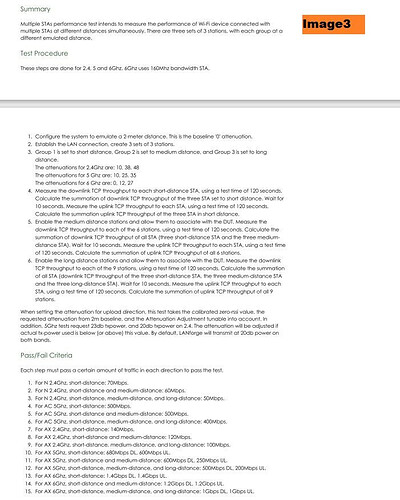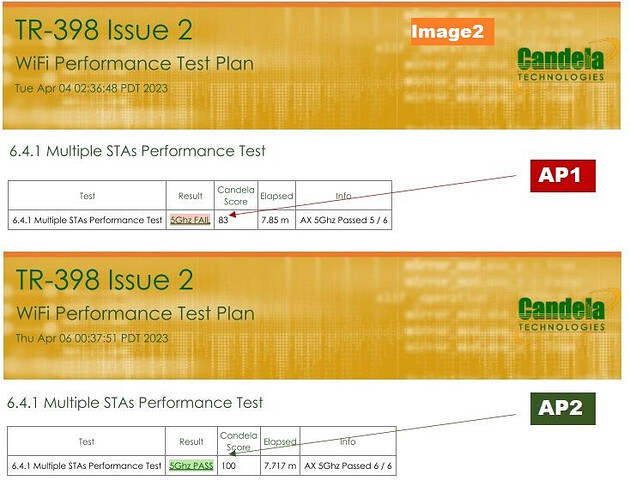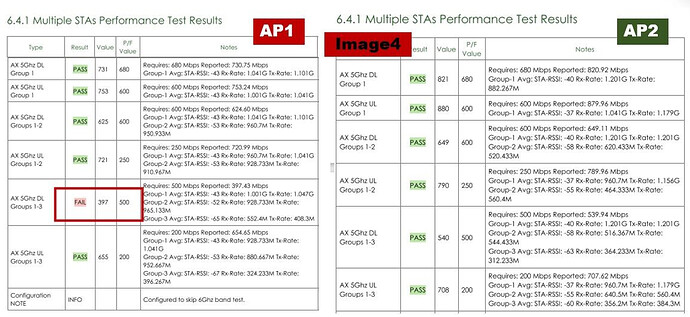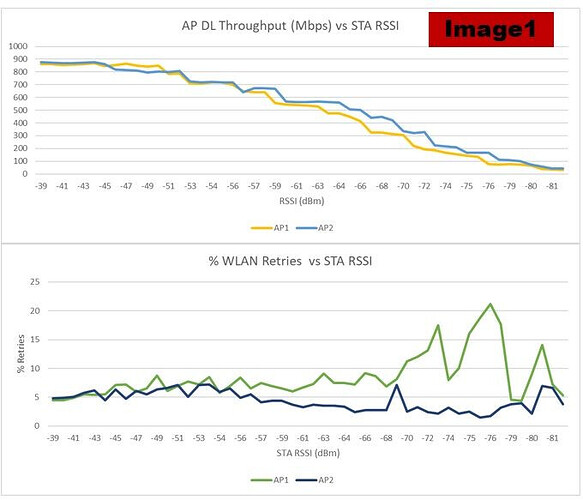When implementing rate scaling in a Wi-Fi Access Point, is it better to choose higher MCS rates with possibly higher retry rates or choose lower rates and avoid retries? Lower data rates, or higher retry rates, which is more costly when it comes to Wi-Fi throughput and medium utilization?
In the TR-398 spec we have a test called Multi STA performance test (See Image3 for more description).
When we ran this test with two different APs, the test failed with AP1 but passed with AP2 (see image2 and image4 below). Upon further analysis, we noticed that AP1 was failing only in the DL (AP to STA) scenario and only where we had 3 NEAR clients + 3 MEDIUM clients + 3 FAR clients (see Image4) and AP2 was passing.
So, to narrow down to the problem area, we ran a standard RvR test on each of these APs and what we noticed is that both APs were achieving somewhat similar throughput (see image1) at most STA RSSI values.
But when we look at the % retries, AP1 had significantly higher % retries than AP2 (see Image1), which means that there seems to be some issue with AP1 rate scaling algorithm as it doesn’t seem to be taking % retries as a factor when rate scaling.
Now the question is, why did the higher % retries on AP1 not affect its overall throughput by a big margin? Since there was only 1 STA, there is more available medium capacity to handle the excess retries and still achieve the throughput. This test was run in 2x2 MIMO 80Mhz 0.8usec GI mode where the max PHY rate is 1201Mbps which can result in a max throughput of a little over 1Gbps. Because of this even with a large % of retries AP1 was still able to achieve good throughput as it had all the medium to allocate for a single client.
But now let us apply this problem to the Mutli-STA performance test. In this case AP1 had to handle 9 clients at different distances from the AP which means the transmission to each group of clients will have to use different MCS rates. In this case there will very little margin for inefficient utilization of the medium, which means in this scenario there is no room for the AP to allow for over 10% retries and still pass the test. So, in this scenario it would have been better for the AP to pick a lower MCS rate that can guarantee lesser retries and, in that process, use the medium much better and pass the test. This is the case where raw throughput needs to be sacrificed for more efficient medium utilization.
Hence, we found the TR-398 Muti-STA test to be super interesting as it seems to find a problem for us that a normal RvR test we run most of the times on these APs could not find for us.
In my personal opinion, TR-398 is arguably one of the best Wi-Fi test plans that has even been written. The Broadband Forum team did a fabulous job on covering all the bases when it comes to Wi-Fi performance and this test is a great example to make that point.
Would love to hear from the experts if my analysis has any flaws in it.
Credits: ![]()



